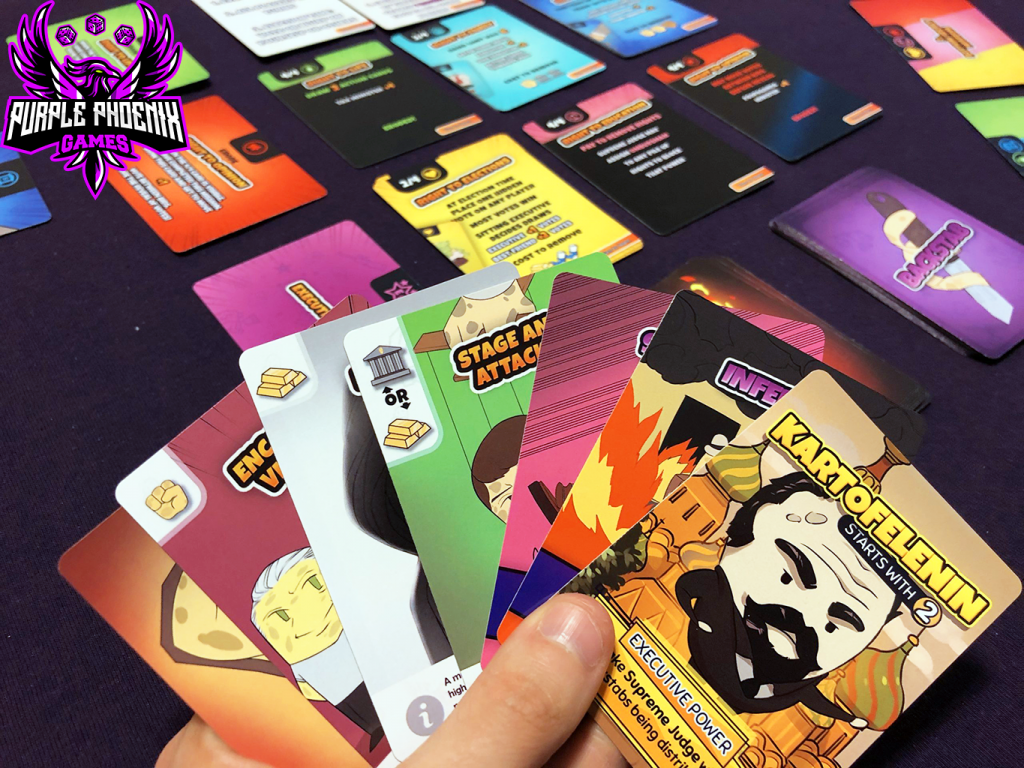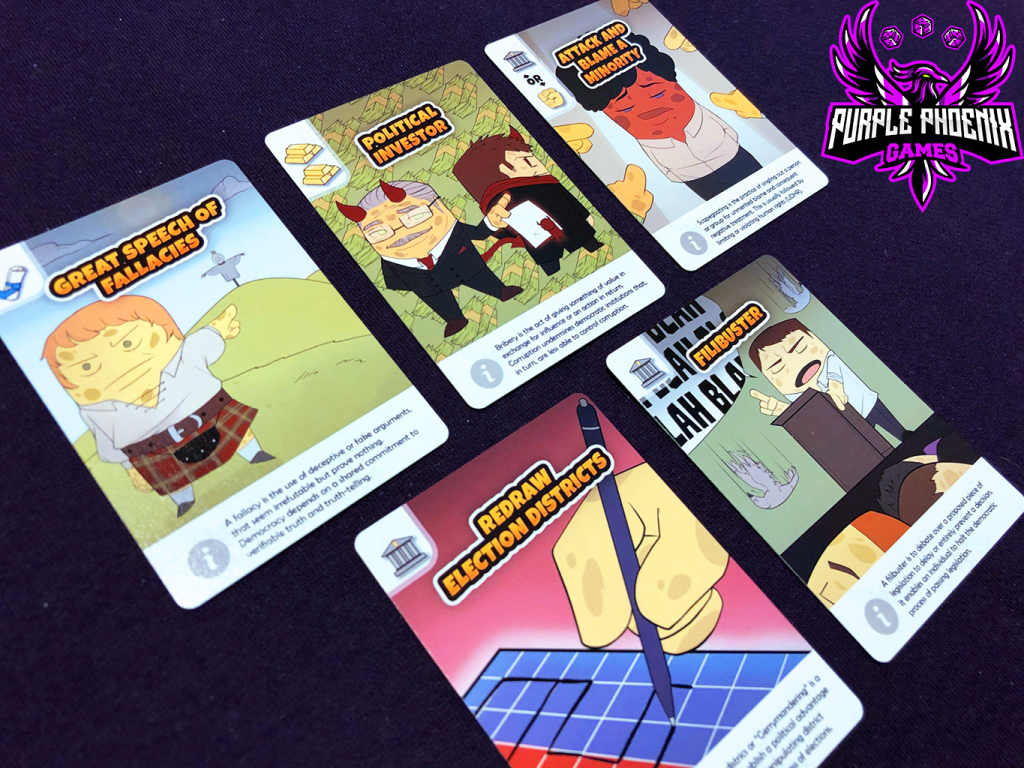
The world of politics and democracy is definitely a complicated and confusing place. Finding your way through all the jargon and political processes can be mind-boggling. Enter Tatorship – the card game specifically designed to teach you about democracy and politics as you play!
| Tatorship (2019) | (self-published) |
| 3-5 Player | 40-60 minutes |
| Ages 14+ | BGG Weight – (not yet available) |
Disclaimer: We were provided a copy of this game for the purposes of this preview. This is not the finished product, so some of the components may change in the final printing. -L
Tatorship is a card game of hand management and bidding in which players are racing to complete their secret political missions before their opponents. To set up the game, place the 6 Rights in their respective piles in ascending order. Each player randomly selects a Tator, Top Secret Mission, Bottom Secret Mission, and Executive Mission, as well as Action cards and a Bluff card. The Tator is your character, and provides a unique Executive power. The Mission cards (Top, Bottom, and Executive) each refer to specific Rights in the play area. Action cards provide resources necessary for interacting with the Rights, and for use during the Election.
On your turn, you interact with the current Rights on the table. The Rights in play act as the ‘rules’ for the current round. For example, one Right tells you how many Action cards to draw each turn, and another tells you what your hand limit is at the end of your turn. During this phase, you will also have the opportunity to ‘erode’ (remove) Rights from play. To erode a Right, you must pay the resources displayed on the Right card. Each Right has 4 cards, and the bottom-most card must be showing for that Right to be considered to be completely eroded. Your secret Missions require you to erode specific Rights in play, so you must strategize how to use your resources to best benefit your Missions. After all players have taken a turn, the game moves to the Election phase. During the Election, players are casting votes (the # of resources on the Action card is the # of votes it is worth) in an effort to elect a player to be the Executive for the next round. The Executive goes first in the next round, and gets to assign Roles to all players. In order to complete your Executive mission, you must have the Executive card at time of completion. You can vote for an opponent, as well as yourself. Cast a vote with your Bluff card, however, and your votes do not count! Trick your opponents into thinking you’ve voted for them, but reveal the Bluff and get those votes back. Didn’t win the Election? That’s ok! Take a Backstab card as a condolence. Backstab cards can be played at any time and can negatively affect your opponents, or could give you a leg up over opponents. Play continues until one player has completed all 3 of their secret Missions.

If you are confused at all by the rules/gameplay overview above, I have to admit that I am too. The rules provided with this game are extremely vague and confusing to understand. Not even a rulebook, these rules are compiled on 3 separate playing cards. The text is sparse, ambiguous, and contradictory. For example, one card says that each Right is followed once per turn per player, but in any order. But one of the Rights pertains to the Election phase, which I believe only happens once per round? Or does it happen on every single players’ turn since each Right is supposed to be followed by every player on every turn? The ambiguity of the rules bleeds over into other cards as well. Some cards say to ‘discount’ a Right, but nowhere does it say what ‘discount’ means. Do you immediately erode that Right by one? Or do you just pay one fewer resource to erode? There is no clarification anywhere, and that made this game frustrating to play.
Another qualm with this game is that it is supposed to be educational, but I do not think it achieves its goal. I do have to commend the creators for their efforts, but I think they fall flat. Every Action card has small text at the bottom that details the political concept addressed on the card. Here’s the catch – the text is educational, but it is so small that it can be easily ignored. It also has no bearing whatsoever on the gameplay, so I have to admit that I almost never read any of that extra text.

In theory, this game could be fun and educational. In actuality, though, it falls flat. The ambiguity of the rules meant that we played differently nearly every time. We tried interpreting the rules in several ways, but ultimately we just got frustrated by not knowing how everything actually works. With some serious rules work, this game has the potential to be something good. But in its current state, it feels more like a half-baked potato.

